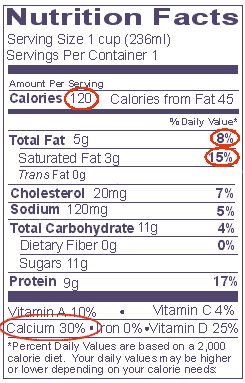Featured Media Resource: VIDEO: The Chocolate Milk Debate (ABC News)
Learn about the potentially negative effects of high-calorie, high-sugar chocolate milk in elementary school lunchrooms, forcing us to rethink age-old beliefs on the health value of milk.
Get the latest on this topic from the new Above the Noise episode Is It Time For You To Ditch Meat and Dairy?
Do Now U
Do the potential health risks of drinking milk outweigh its high nutritional content? What do you think? #DoNowUMilk
How to Do Now
To respond to the Do Now U, you can comment below or post your response on Twitter. Just be sure to include #DoNowUMilk and @KQEDedspace in your posts.
Learn More about the Health Benefits and Risks of Drinking Milk
Got Milk? From 1993 through 2014, the American public was familiar with this catchphrase and popular advertising campaign. However, facing sluggish sales in light of a growing market for other beverages, the milk industry has shifted focus with a new “Milk Life” campaign, highlighting the nutritional benefits of the former dietary staple. Since dropping the catchphrase in 2014, the industry has faced a bigger question: should you have milk? With both proponents and opponents using nutritional support in their cases for and against traditional cow’s milk, is dairy as good as some say or as bad as others say?

The research supporting the avoidance of milk calls on a variety of compelling health statistics. A single serving of whole milk contains 20% of the recommended daily allowance (RDA) of saturated fats and up to 24 mg of cholesterol. Because dairy products contribute to the overall saturated fat, calorie, and cholesterol content of the diet, they also contribute to increased risk of obesity, heart disease, and type 2 diabetes ). Other studies have shown milk and other dairy products linked to prostate cancer in men and ovarian cancer in women. But what about milk being good for school-aged children? Although milk is a great calcium source, the animal proteins in dairy can have a calcium leaching-effect. Because of this, researchers are reevaluating milk’s relationship to bone health. For example, a Swedish study determined that women who drank milk were more likely to develop fractures than women who drank little to no milk. Additional studies have shown that the consumption of cow’s milk correlates to prevalence of acne in girls and boys. And, although the effects aren’t certain, the antibiotics pumped into cows may lead to antibiotic resistance in humans who consume milk and other dairy products. Lastly, 75% of the world’s adult population is intolerant to lactose, the sugar found in many milk products, suggesting that the human body is not suited for extended consumption of dairy.
